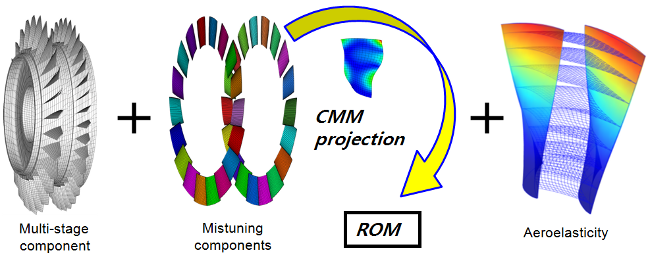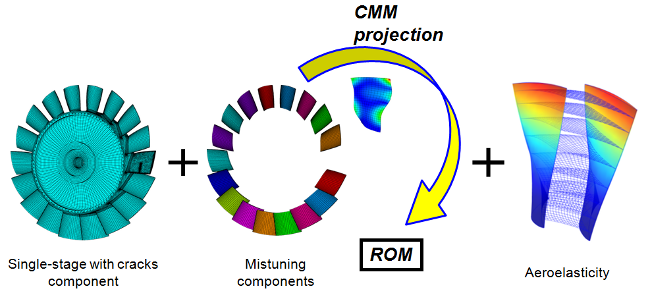|
The vibration analysis of a bladed
disk in a turbine engine rotor can be conducted relatively easily
if it is assumed that each sector of a bladed disk in a turbine
engine rotor is identical because cyclic symmetry can be employed.
In reality, however, there are unavoidable small differences among
the structural properties or geometric characteristics between
individual blades due to manufacturing tolerances, material
deviations, and non-uniform operational wear. These small and
random differences are commonly referred to as mistuning. Even
though mistuning is typically small in terms of individual blade
properties, this small mistuning can have dramatic effects on the
forced responses. Namely, mistuning can cause localization of
vibration to a few blades of the bladed disk which can lead to
drastic increases of amplitudes of blade responses.
In actual operating conditions, the blades of a turbine engine
rotor always experience interaction with flows, therefore the
bladed disks also exhibit aerodynamic coupling in addition to
structural coupling. This aerodynamic coupling causes the system
to have aerodynamic stiffness and damping, which can affect the
stability of the system by changing both the free and forced
responses of the bladed disk. Thus, aeroelastic calculations are
necessary in addition to structural calculations for predicting
accurately the vibration characteristics of bladed disks.
We currently focus on the aeroelasticity of mistuned multi-stage
bladed disks, and an efficient reduced-order modeling method which
considers unsteady aerodynamic forces has been developed. We also
explore the aeroelasticity of mistuned single-stage bladed disks
with damage such as cracks.
Aeroelasticity of Multi-stage Turbine Engine Rotors

Aeroelasticity of Single-stage Turbine Engine Rotors with cracks

|

